Just a block away from Maboneng, Kwa Mai Mai exists as it has for decades. Dubbed the 'place of healers', Kwa Mai Mai was established 100 years ago during the height of labour migration and operates as a food and muthi (herbal medicine) market (see 10 things you need to know about Kwa Mai Mai here). The muthi market is more contained and concealed and is a sacred space. However, there is an extremely popular food spot adjacent, in an open parking lot filled with plastic chairs and garden tables covered with vinyl tablecloths.
It's nothing fancy, but on weekends, you might be led to think otherwise if you catch sight of the cars that park under the nearby bridge. It's not unusual to see glossy speed machines that bring people from far and wide to feast on the market's cheap and cheerful shisa nyama offerings. This place, since the Covid-19 hard lockdown of 2020, is one of the main attractions in the City Centre, trending on social media as "The Mai".
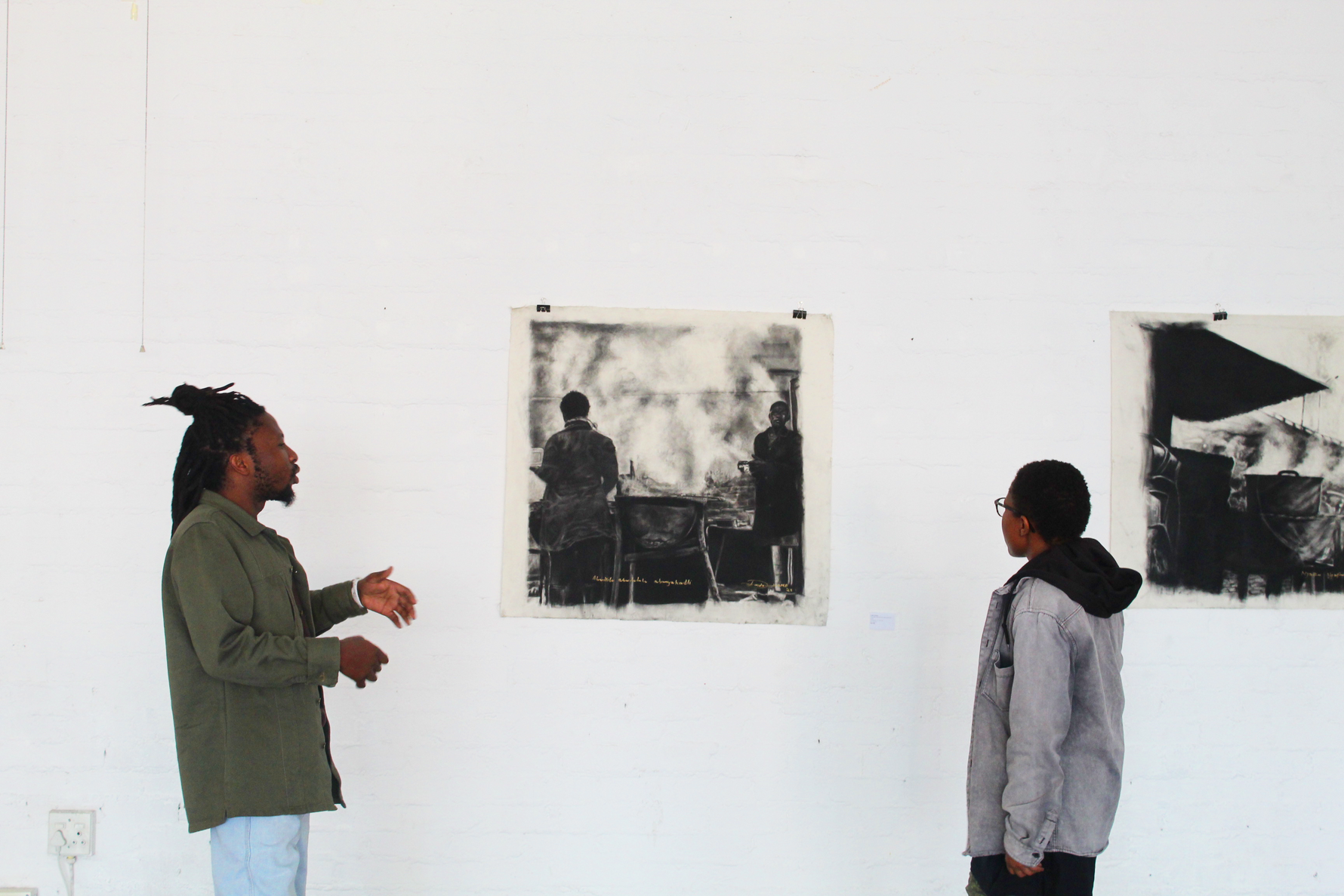
In Joburg, there is a fine line between existing and thriving. Insizi Ye Bhodwe serves as a celebration of thriving. It is a transition from Zwane’s previous introspective work, Ubumnyama (meaning 'darkness'), which contends with the frustrations of existing during load-shedding and the lack of safety in Johannesburg.
It was during Zwane's residency at August House in 2019 when Insizi Ye Bhodwe was conceived. Kwa Mai Mai was a daily to-go meal spot with fellow visual artists, and Insizi Ye Bhodwe reminds him of the women who – much like his mother – remain tender despite it all and keep the city running.
Kwa Mai Mai food market is often captured in colourful and heavily saturated photographs, but Zwane's depiction is different – almost intimate – and reveals the labour behind the popular food hangout. At the centre are the women with ochre face masks and large sun hats, cooking meals in full view of their customers. They serve traditional Zulu food: uphuthu (fluffy, dry pap cooked from pulverised maize meal), inyama yenhloko or skop (cow head meat), ushatini (salsa made with chopped green chilli, tomatoes, and onion), and many variants of meat.
"I see my mother in the women who prepare the food at Kwa Mai Mai. I've also noticed that many visitors come to the spot to take videos and pictures – and then leave. I wanted to document the women in a different light."
Insizi Ye Bhodwe celebrates the resilience of migrant labourers in Johannesburg. Zwane, originally from KwaZulu-Natal but raised on the East Rand, takes us on a tour of his latest work in the studio. He recounts his love-hate relationship with Johannesburg, which began in the early 2000s when he realised that everyone's search for their own "gold" was marked by a dark political history of migrant labour. Though it is well over a century since the discovery of gold, the entrepreneurial energy persists. Much like the migrant labourers of past and present, Zwane also shares a history of coming to the city for better economic outcomes. He set his sights on being a visual artist, a dream he had from a young age, and with the support of his mother, ventured into the world of art in 2012 when he began his studies at Artist Proof Studio.
"As a young boy, I used to run my fingers across the outside of a pot and apply the ashy residue to my black school shoes to polish them. In some way, the activity at Kwa Mai Mai reminds me that life can be sustainable if we value all the objects we come across."
Zwane takes his time to think about the inspiration for Insizi Ye Bhodwe – almost looking at the artworks as if for the first time. He explains that he was inspired by the art of still life, balancing the shadows and light in capturing the women of Kwa Mai Mai in silhouettes. Documented with the assistance of photographer Andile Bhala, who accompanied Zwane on his daily visits to Kwa Mai Mai, the pieces focus on different times of the day and are titled according to the phrases that Zwane overheard from the women as they spoke while working.
The central work is a large pot over coal fires, symbolising the morning. Another depicts evening time and captures the exhausted women preparing the last meals of the day.
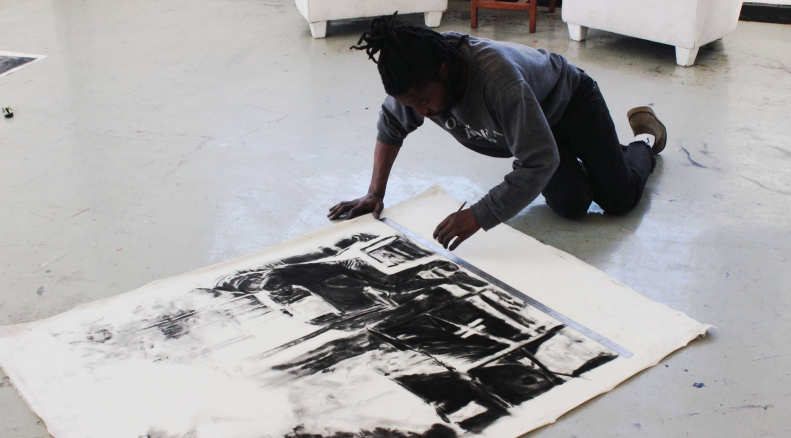
“My mother never gets tired, she’s always working. There’s this thing about women, they never complain, no matter how much work there is to be done. I see my mother in the women who prepare the food at Kwa Mai Mai. I've also noticed that many visitors come to the spot to take videos and pictures – and then leave. I wanted to document the women in a different light. The space serves as an economic hub for them; they are working for their families back home in KwaZulu-Natal," Zwane explains.
Though Kwa Mai Mai traditionally celebrates the preservation of Zulu identity and customs, it is open to everyone: there are no VIP areas or smoking or non-smoking sections. Whether you come in your fanciest labels or threadbare jeans, each customer is treated with respect and – at the insistence of the women – is given a small dish of water to wash their hands before they eat.
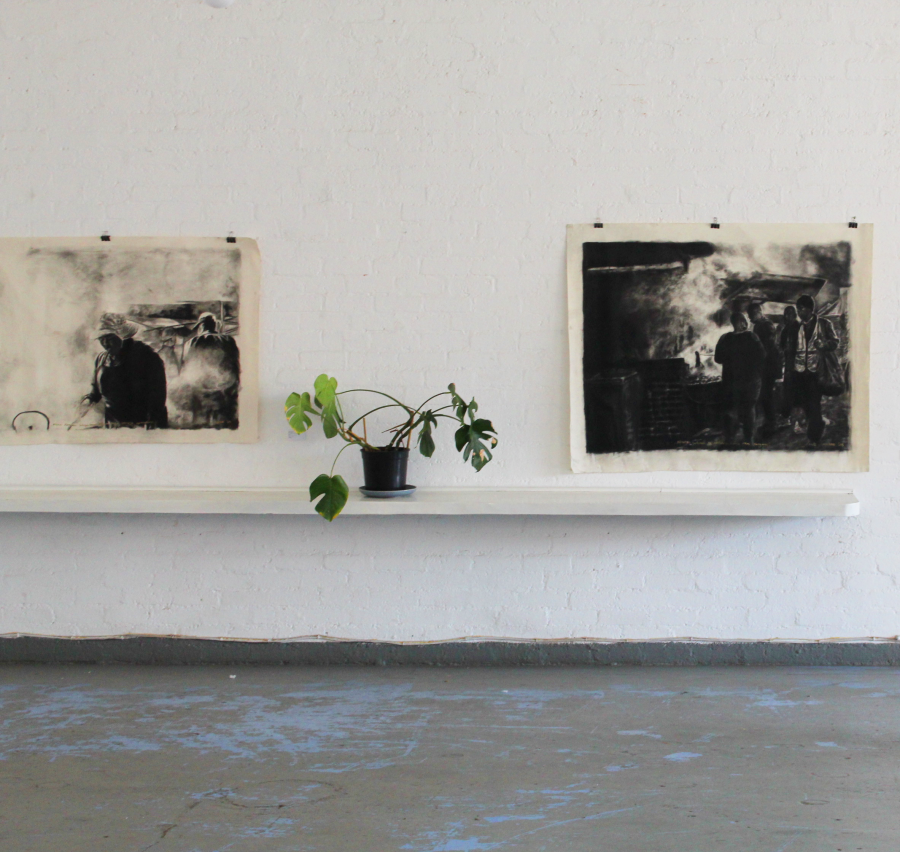
"Celebrities like [rapper] Big Zulu often frequent Kwa Mai Mai, but are never cordoned off from the rest of the public. Regular visitors tend to gravitate towards their favourite cooks, and in this way, build relationships with them and get to know their stories. Young people from KwaZulu-Natal looking for a break in the music industry also come to Kwa Mai Mai to network and put themselves on the map – the women go out of their way to support them." says Zwane. It's a colourful gathering together, each with his or her own story.
Insizi Ye Bhodwe refers to the dark, ashy residue left on the cast iron pots after cooking over an open fire, the very same residue that Zwane used to polish his shoes before going to school. “As a young boy, I used to run my fingers across the outside of a pot and apply the ashy residue to my black school shoes to polish them, and in some way, the activity at Kwa Mai Mai reminds me that life can be sustainable if we value all the objects we come across.”
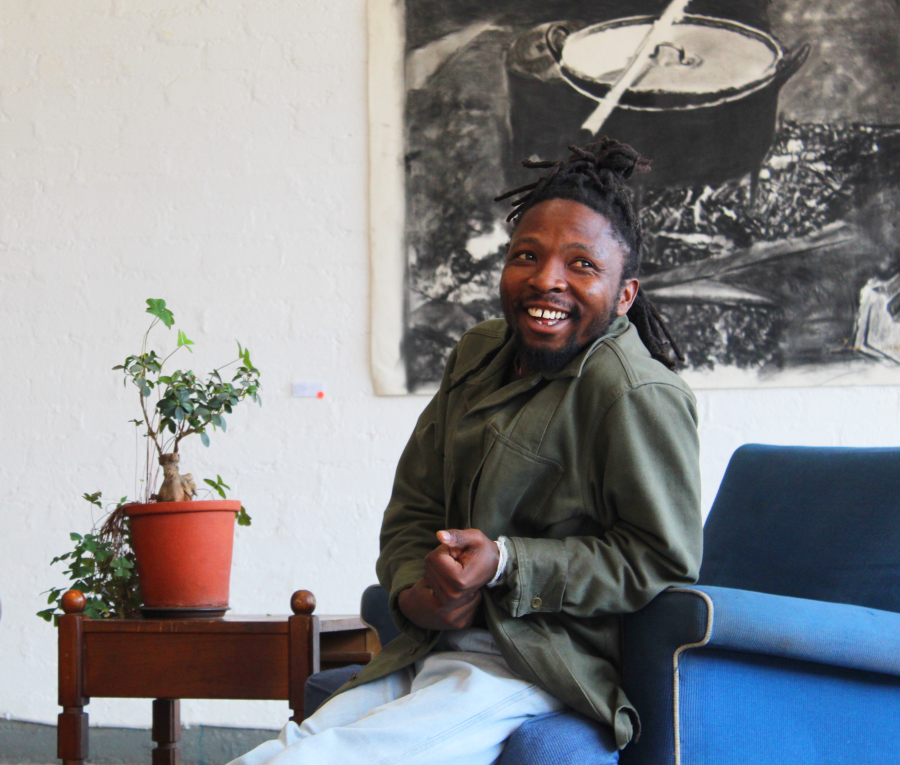
The still-life objects in the artworks, like the giant silver kettle, are reflective of his childhood. Used to boil water for bathing and cooking, the same kettles are used at Kwa Mai Mai for the preparation of food. Old oil barrels are used as braai stands, zinc and wooden doors as tables or trays to carry heaps of meat and pap, and old metal sticks become prongs to turn the meat. Using old things to sustain life was criticised under the guise of hygiene during lockdown when Kwa Mai Mai gained prominence on social media. But people continue to flock there for the shisa nyama (meat prepared on an open fire) and Kwa Mai Mai continues to exist in defiance of modern pressures.
Read our #MyJoburg interview with Lindo Zwane here.


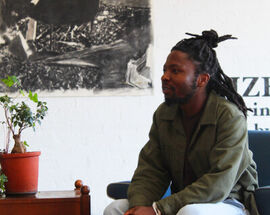
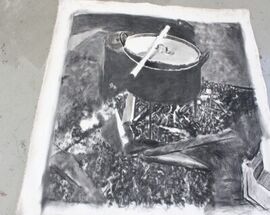
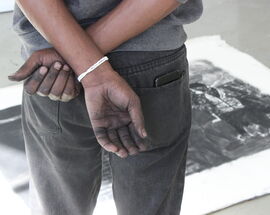


Comments